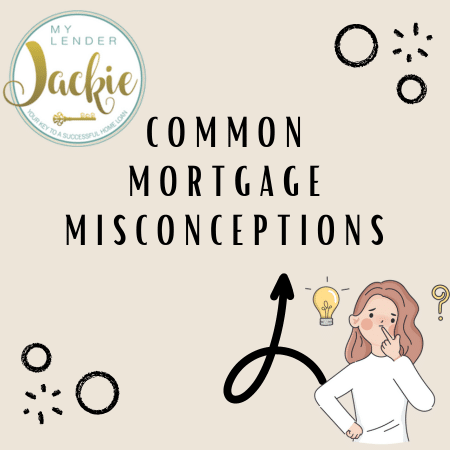If you’ve never applied for a mortgage before, there are plenty of ideas you might have that are causing unnecessary stress or leading you in the wrong direction. There are quite a few common mortgage misconceptions about getting a mortgage, and we can help. Whether you’ve already applied for a mortgage or you’re just beginning the process of preparing to buy a home, check out these common mortgage misconceptions to learn more and move forward with confidence.
Common Mortgage Misconceptions
 Misconception: You Need a Perfect Credit Score Before Applying
Misconception: You Need a Perfect Credit Score Before Applying
Thinking you need a perfect credit score is easily one of the most common mortgage misconceptions. It’s no secret that a good credit score is one key to qualifying for the best terms on your mortgage, but some borrowers are waiting for a perfect or nearly perfect score when they really don’t need to. While having a higher credit score can certainly improve your chances of securing a favorable interest rate, there are also many mortgage options for borrowers with credit scores below 700. Remember that when we look at your application we are going to consider various factors, including credit history, income, and debt-to-income ratio.
Do what you can to boost your credit score, but don’t delay applying if this is your only reason. You may be surprised to find out that you can qualify earlier than you thought.
Misconception: You Need a Huge Down Payment
Another mortgage misconception is that a large down payment, at least 20%, is necessary to purchase a home. In some ways, it’s true that a larger down payment is a good move. It can reduce your monthly mortgage payments and potentially lower your interest rate, also eliminating the need for PMI (private mortgage insurance).
However, if saving a 20% down payment is not realistic for you, understand that there are many mortgage options available that require down payments as low as 3% to 5%. Additionally, there are down payment assistance programs and government-backed loans, such as FHA loans, VA loans, and USDA loans, that offer alternatives for borrowers with limited funds for a down payment. Before you assume you’re not ready to buy, talk with one of our loan officers about different down payment options that might work for you.
Misconception: Being Pre-Qualified and Pre-Approved are the Same Thing
Pre-qualification and pre-approval are often used interchangeably, but they actually shouldn’t be. They represent different stages in the mortgage application process. Pre-qualification is an initial assessment based on information provided by you, such as income, assets, and debt, often given to the loan officer verbally and without any verifying documents.
Pre-approval, on the other hand, involves a more thorough review of the borrower’s financial documentation, including credit checks and verification of income and assets. Pre-approval provides a more accurate estimate of the loan amount you’re eligible for, and it also demonstrates to sellers that you’re a serious buyer. When you have secured pre-approval, you can make offers on homes with a letter of pre-approval in hand to show sellers that you are ready to move forward with the purchase.
Misconception: You Should Use Your Current Bank for Your Mortgage
Some people assume that they need to use their current bank for their mortgage, but you can actually use whatever lender is able to offer you the best terms. It’s essential to shop around and compare rates and terms from multiple lenders to find the best mortgage option for your needs. Different lenders are probably going to offer you varying interest rates, loan products, and closing costs, so it’s worth exploring your options to ensure you secure the most favorable terms.
Misconception: You Should Choose the Loan with the Lowest Interest Rate
While securing a low-interest rate is important, it’s not the only factor to consider when choosing a mortgage. Smart borrowers are going to apply for multiple loans so that they can compare terms, and this means comparing the loan as a whole and not just the interest rates. You should also take into account factors such as loan terms, closing costs, and lender fees when evaluating mortgage offers. Additionally, you should consider your long-term financial goals and whether a fixed-rate or adjustable-rate mortgage aligns best with your needs and preferences. We’re here to help you navigate this dynamic process.
To learn more about buying a home or qualifying for a mortgage, contact us any time. Our loan officers can help you explore your options, check out creative financing solutions that align with your needs, and help you reach your goals in real estate.

 Misconception: You Need a Perfect Credit Score Before Applying
Misconception: You Need a Perfect Credit Score Before Applying